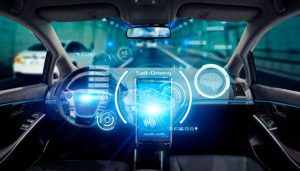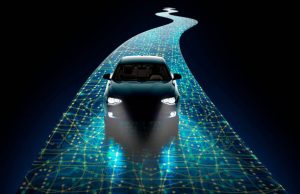Will there be a self-driving car dealership in your area? What you need to know about this technology and what it means for the future is provided here.
You probably picture a car that accelerates, steers, and brakes on its own without a human at the wheel when you think of self-driving automobiles. But autonomous driving goes far further than that. A wide spectrum of technology is regarded as “self-driving,” from the autopilot feature in Tesla automobiles to driverless pizza delivery.
What you’re picturing is actually referred to as a completely autonomous car, or a vehicle that can operate without any human intervention. Although businesses are already utilizing autonomous vehicles for business purposes, it will still be a while before completely autonomous cars are offered for sale at car dealerships.
Many businesses have shifted their timetables around ten years into the future after making lofty promises in the past and realizing that creating an autonomous vehicle [to sell to the public] was more challenging than they had anticipated.

In the last few decades, autonomous technology has advanced significantly, but there is still a long way to go. To learn more about autonomous vehicles, including what they are, how they operate, where they are legal, and other topics, we spoke with experts. Are you interested in other technology that will influence the future? Next, find out the most recent information on the metaverse, AI, and real-world robots.
What do autonomous vehicles do?
According to the National Highway Traffic Safety Administration, autonomous vehicles come in different stages (NHTSA). A completely autonomous vehicle is one that drives itself using sensors and cameras without any help from a person, according to the NHTSA. Fully autonomous vehicles have been developed by businesses like Google’s Waymo, but they are not currently on the market for regular drivers to purchase.
Advanced driver-assistance system (ADAS) technologies like cruise control and collision warnings, which are aspects of automated driving but still require a human to operate the vehicle, should not be confused with fully autonomous cars. Even though many of the vehicles on the road nowadays have high-tech safety systems and are loosely referred to as “self-driving,” a driver must always keep their eyes on the road. According to NHTSA regulations, none of these are completely autonomous vehicles.
Every car now for sale in the US needs the driver’s complete attention at all times to operate safely. While more cars now have autonomous functions to help the driver in some situations, these cars still don’t operate entirely on their own.
How do autonomous vehicles operate?
Sensors and cameras are used in conjunction with autonomous vehicles to recognize their environment and react to it. Radar sensors track the whereabouts of other vehicles, video cameras record traffic signals and road signs, and Lidar and ultrasonic sensors detect curbs and lane markers using reflected light or sound.
All of these sensors work in tandem with robust computer software to control the car and respond to barriers or other traffic-related vehicles. The “system is totally accountable for driving tasks under all circumstances and on all roadways” in a fully autonomous vehicle. The system can be used without a human driver, according to the NHTSA. Similar technology may be employed by other self-driving vehicles, but a human must still operate the steering wheel and pay attention.
The greatest virtual reality headsets can offer you a taste of the future, even if you can’t now operate an autonomous vehicle.
Exists a self-driving car right now?
A fully autonomous car won’t be available for purchase for at least another ten years, according to Montoya. However, a number of self-driving car manufacturers have actually produced autonomous vehicles, and some of them may be on the road with you right now.

When it comes to self-driving cars, Waymo, an autonomous technology business, and its parent corporation, Google, are regarded as the leaders of the field. In 2015, a test drive of their first autonomous vehicle was conducted on the streets of Austin, Texas. Since then, an autonomous ride-hailing service and a commercial trucking program have been developed using Google and Waymo’s driverless technology.
Lyft’s vehicles operate in autonomous mode, while safety operators are seated in the driver’s seat to handle emergencies. According to her, every self-driving Lyft vehicle is 100% electric in addition to being customized to passengers’ travel preferences with regard to music and cabin temperature.
Where are self-driving cars legal?
States have different laws governing self-driving automobiles, according to Montoya. Some states, including Texas and California, permit autonomous car operation, while others merely permit testing of these vehicles. 33 states and the District of Columbia currently permit the deployment or testing of autonomous vehicles.
These restrictions are mainly designed for self-driving car businesses who are testing products or commercial autonomous vehicles, as driverless cars are not now available for purchase. However, when self-driving cars are made accessible to the public, expect more laws. The same is true for other speculative enterprises, like space travel, where new regulations will suddenly appear.
What role will autonomous vehicles play in the future?
The first time many people encounter autonomous vehicles may be in a ride-sharing service like Lyft. If passengers feel at ease traveling in autonomous vehicles
The future of vehicles without human drivers is bright—and significantly safer—once driverless cars are more extensively used. According to Sanchez, autonomous vehicles can eliminate accidents brought on by human error, driver fatigue, or impairment, which will account for approximately 40,000 fatal car accidents in 2020 alone.
Self-driving cars may also improve vehicle efficiency and occupant comfort while easing traffic congestion. As a result, [automated vehicles] can move more people more continuously, using less space for parking and enhancing urban planning.
Are autonomous vehicles safe?
While completely autonomous vehicles potentially have a lot of advantages, their primary challenge is safety. The lengthy public rollout of autonomous vehicles is due to this. Many experts claim that before they are offered for sale to customers, developers still need to perform more work to ensure their safe operation.
Autonomous vehicle sensors and cameras are not always reliable, especially in some circumstances. Self-driving technology is still limited in its ability to function anywhere, in all weather conditions, and at all hours.
Additionally, there are legal concerns with regard to driverless cars. Legislators may need to decide who is to blame for accidents brought on by autonomous vehicles at some point. And although, though the government already governs self-driving vehicles for commercial usage, it will probably need to establish additional rules whenever fully autonomous vehicles are made accessible to the public.
In the interim, if you’re considering buying a hybrid automobile, beware: Hybrid autos have a significant drawback as well, so you might want to think about one of these eco-friendly cars instead.
